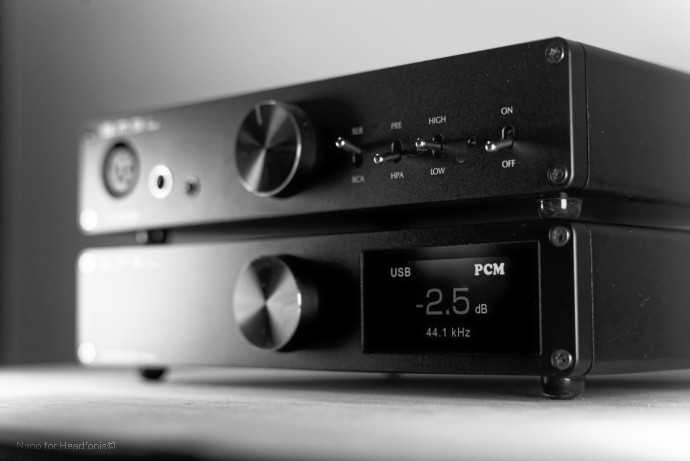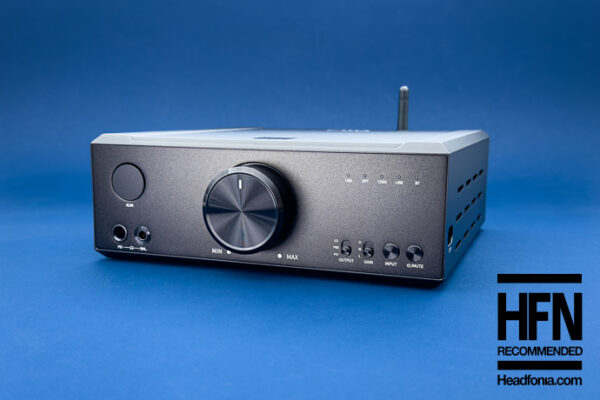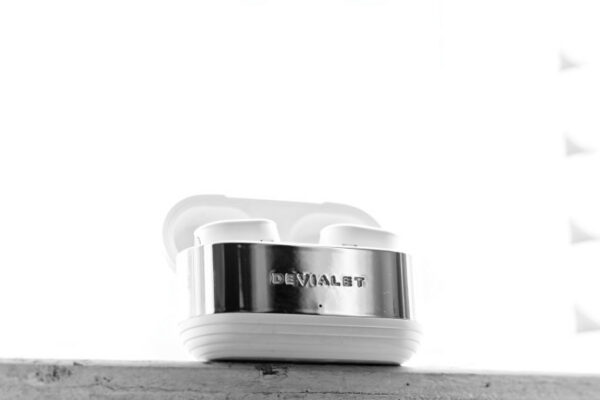Design and Build Quality
Casing
To nobody’s surprise, the SMSL DO200 MKII looks 99% identical to the previous version. Not only does it come in the exact same package as the DO200 – a big, white, retail box – it also shares the same housing and design as its predecessor.
Out of the box, you get a medium-sized DAC, measuring 210mm x 170mm x 40mm, the exact same dimensions found within the whole xO200 series, so you can pile up every device and get a nice, audiophile, totem. And if not as small as the DO100 and HO100, the DO200 MKII remains quite easy to install on your desktop, thanks to its conservative footprint and slick design.
At 1.20kg, this is a dense DAC that inspires confidence, and once again I was pleasantly surprised by how well the device appeared, out of the box. Built quality is flawless and the DO200 MKII is as sturdy as it looks, even if to my demise, the potentiometer remains a bit too loose to my taste, but that’s just me nit-picking at this level.
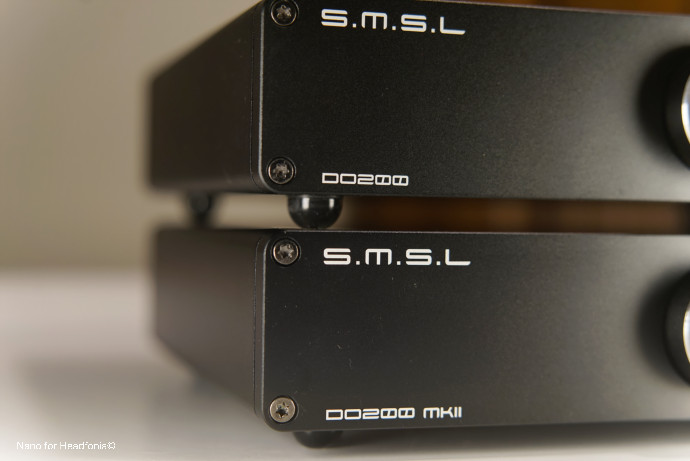
Layout
The SMSL DO200 MKII I/O remains one the very best, giving you every port you may ever need, in both ways. The LCD screen is still there too – now upgraded with a new display and a slightly modified UI – that gives you lots and lots of options to route, tune, and arrange how and where you want to listen to your music.
The back panel comes with two outputs ports:
- 1x XLR to connect a balanced amplifier
- 1x RCA to connect an unbalanced amplifier
And no less than six input ports, to cover every type of source:
- 1x XLR AES/EBU port, mostly used in a studio environment
- 1x USB-B port, to connect your computer or a DAP (plus firmware upgrade now)
- 1x Coaxial port, a classic found on a wide lot of sources
- 1x SPDIF port, same as above, you can find it on CD-Players or even your game console
- 1x Bluetooth antenna, thanks to its new BT chipset, the DAC supports Hi-Res Bluetooth decoding (LDAC, aptXHD, SBC, AAC)
- 1x HDMI port for I2S support, like the Cayin iDAC-6
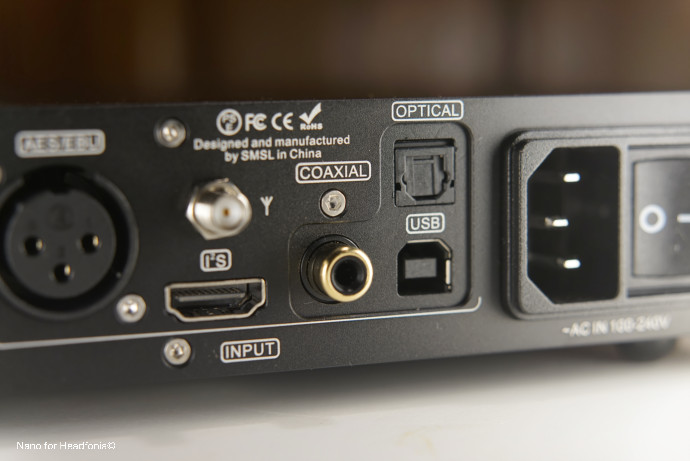
Then, upfront, you’ll find:
- a clickable control wheel, that allows you to set the volume in pre-amp mode, and access the full menu…
- … available through the LCD screen, located on the right side of the front panel
Finally, I was, once again, surprised to see that the SMSL DO200 MKII also integrates the power supply instead of relying on a separate one. If a bit heavier, this also means that you can use a classic plug or a Y-splitter that I do on my desk
So, let’s set up the DO200 MKII and see how it goes.
UI and Usage
Connection
Like many modern DAC, the SMSL DO200 MKII can output a line-level output, and work as a pure Digital-to-Analog-Converter, or feed a power amp with a variable-level output, like a pre-amplifier. Bonus point, you can even use both outputs at the same time, or just one at a time (XLR/RCA), in case you only use one kind of amp with this DAC.
And, thanks to its comprehensive I/O, the DO200 MKII became, once again, the hub of all my sources. If I mainly used the USB port, the DAC was easily paired with every gear I own, from a streamer (the iFi NEO Stream in this case), a computer (with the Toslink input), a CD-Player (Toslink input), or even my PS4 (HDMI with my TV amplifier pass-through function).
Of course, the DO200 MKII best partner remains the HO200. Just plug them with XLR or RCA inputs, and everything should work as intended. But, if you really want to go full-length, you can also pair a power amplifier to the DO200, and go bonkers by interlacing the HO200 in the middle, as a pre-amp. Personally, I added a NuPrime STA-9 to create a full combo, with a DAC (SMSL DO200 MKII), a pre-amp (SMSL HO200), and a power amp (NuPrime STA-9), as the brand would do with the AO200.
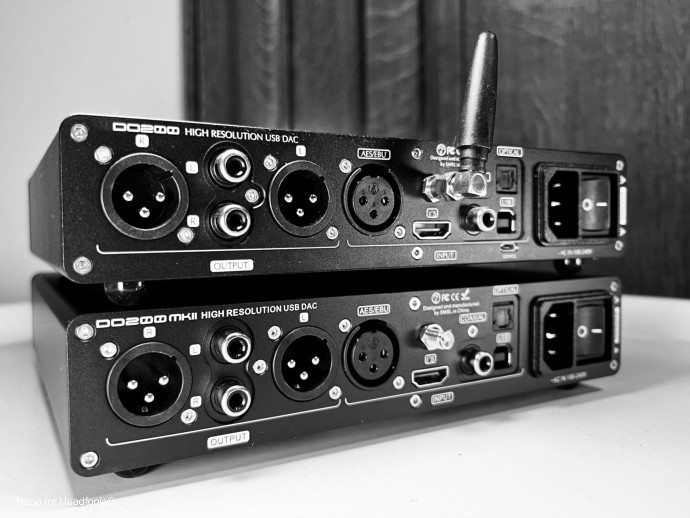
Everyday Use
As a dedicated desktop solution, the SMSL DO200 MKII is simply perfect.
I stacked the DAC over the HO200, plugged a power supply, linked the two devices with XLR cables, and connected my computer thanks to the provided USB cable. And, once connected, the DAC was immediately recognized by both my PC and MAC.
Bluetooth is a nice addition and if the DO200 MKII should be connected to a real Wi-Fi streamer, for best performance this input can be a nice option if you just want to quickly listen to a track from your phone. Also, if the Bluetooth chip is identical to before (Qualcomm QCC5125) the SMSL DAC now displays a second Hi-Res sticker on top, the Wireless Hi-Res audio one.
Finally, if the control knob makes everything easy to control, it’s still a bit too loose in my opinion. Yet, you’ll get used to it over time, and, if I tweaked a lot of settings at the beginning, once I found the right one, I left the knob untouched 90% of the time.
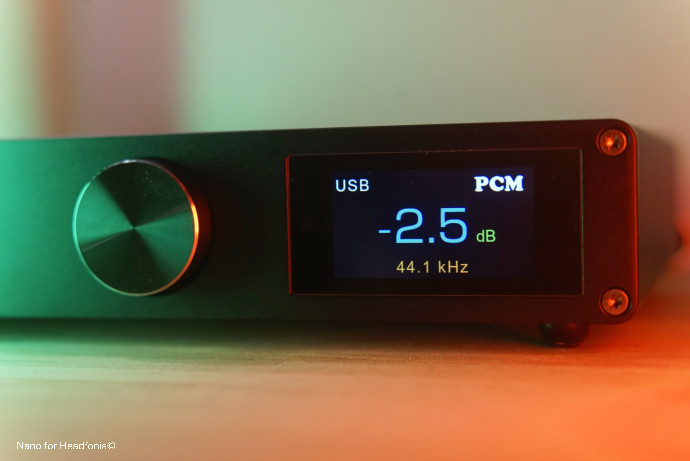
Full Menu
If you want to dig inside the menu, those settings come as:
- Inputs: USB/BLUETOOTH/OPTICAL/COAXIAL/AES-EBU/I2S-HDMI
- Outputs: All Line OUT / Balanced / Unbalanced
- PCM Filter Fast Linear / Minimum Phase / Slow Minimum // I didn’t hear a real difference though
- Sound color: Rich 1/2/3, Tube 1/2/3, Crystal 1/2/3, Standard // if you want to change the color of your sound
- Pre-mode: Vol fixed, volume is fixed on max output level // Vol Variable, volume can be adjusted, like a pre-amplifier
- FN Key: you can choose which key to assign to fn on the remote : Outputs/Bluetooth/Phase
- DPLL: a special function embedded in ESS series products, that allows you to adjust the DPLL and find the right balance between anti-clock jitter and input tolerance. 15 different settings!
- I2S mode: normal/inverted // only relevant when you connect an HDMI source
- I2S DSD Channel: same as above
- Audio Phase: NORMAL (2+,3-) or INVERTED (2-,3+)
- Dimmer: you can set up how long the screen will remain lit after use (5 – 60 seconds)
- Brightness: 6 levels of brightness
- Reset: as it says
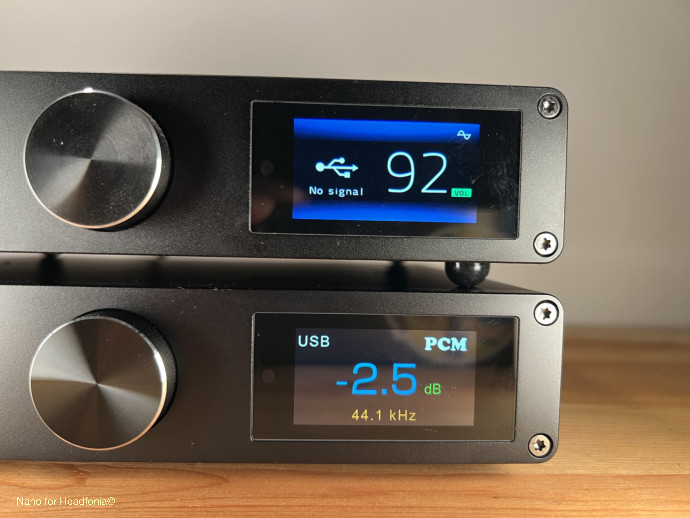
Overall, if settings were simplified, with now just two options in the outputs section or the disappearance of I2S DSD Flag, it remains a very quirky device with LOTS of features that will please the geeky audiophile – as I am.
On that good word, let’s check the specs.
Specifications
SMSL DO200 MKII vs DO200
In terms of specifications, nothing really changed between the SMSL DO200 MKII and the old DO200. Only two technical upgrades were implemented:
- the previous XMOS XU-216 chip has now been replaced by the XU-316, an upper model that supports 768kHz sampling and full 32-bit bitrate. Useful only if you crave DoP256 and native DSD512 support.
- a slightly different display with a new UI and menus
But, apart from that, everything else is identical – which isn’t a bad thing, at all.
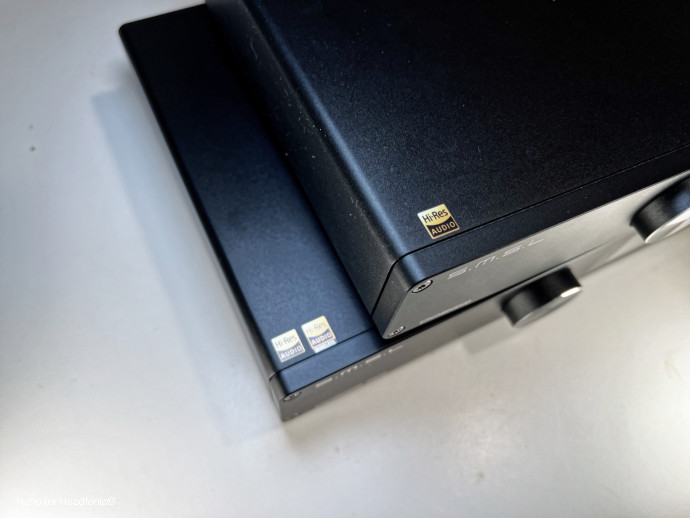
Dual Sabre ES9068AS + XMOS
Once again, SMSL laid out a balanced design, giving the DO200 MKII no less than two Sabre ESS9068AS DAC. A chip we’ve already encountered in the Astell&Kern Kann Alpha, which promised « ultra-low harmonic distortion and wide dynamic range ».
Upstream, to feed those chips, the brand gifted the DO200 MKII an ARM CPU, paired with an FPGA chip from Altera and the latest generation of XMOS chips, the XU-316. Dedicated to the USB and I2S (HDMI) port, this chip offers full support for 32-bit PCM stream, up to 768kHz, and DSD512/DoP256 files for utmost precision.
With 4 ultra-low distortion precision linear feedback circuits, a custom ultra-low noise power supply, and Texas Instruments capacitors, the DAC is advertised as “noiseless, or almost”. On paper, the SMSL DO200 MKII should be able to match its predecessor and my lovely Cayin iDAC-6 which remains my personal choice in this price range.
Yet, the “piece of resistance” remains the fully-balanced circuitry. I still couldn’t open this device but, from the official pics, you can easily see how clean the build is: blackboard, symmetrical supply lines, topped up by capacitors perfectly aligned and ready to work.
Numbers? With a 32ohm Load, the SMSL DO200 MKII harmonic distortion reaches an abysmal level (0.00008%) while maintaining a high signal-to-noise ratio (128dB). Some DAC outperforms the device in this aspect, but almost none are available in the same price range. Last but not least, SMSL gave us some measurements and if I couldn’t do the same, RMS Level and scope are always interesting to look at, from an objective point of view. Line level, the DO200 reaches 123dB per channel, with a 0.000066% THD+N ratio.
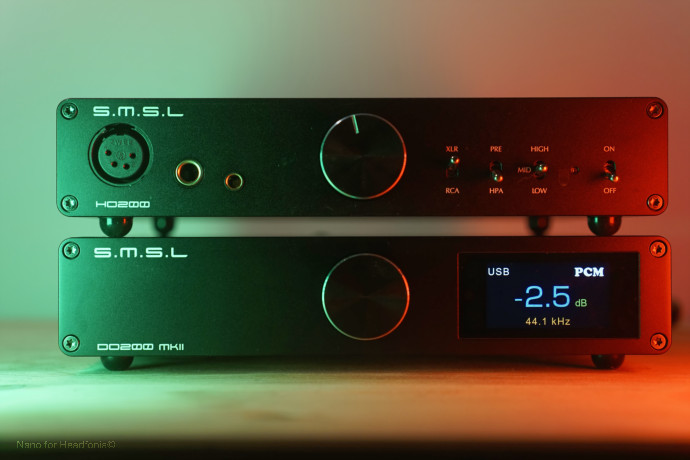
Bundle
The SMSL DO200 MKII bundle is fairly good.
Inside the box you have :
- 1x SMSL DO200 MKII
- 1x power plug
- 1x Bluetooth antenna
- 1x USB-B cable
- 1x remote (but no batteries)
Again, If the brand packed an RCA cable with the DAC, I’d have given a full mark here.
For the nerdiest one, here is the full technical data, for the rest, you can go to the next page already.
Technical Data
- Model: SMSL DO200 MKII
- Type: DAC
- Output : RCA/XLR
- Input: USB / Optical / Coaxial / Bluetooth / I2S-HDMI / AES/EBU
- THD: 0.00008% (-122dB)
- SNR: > 128dB
- Output impedance: 100 ohms
- Sampling rate: USB/I2S – PCM up to 32bit/768kHz / DSD512 // Optical/Coaxial/AES – PCM up to 24bit/192kHz / DSD64(DoP)
- Bluetooth: v5.0 – SBC / AAC / aptX / aptX HD / LDAC
- Size : 210mm x 170mm x 40mm
- Weight: 1200g
- Price: $499
The review continues on Page Three, after the click HERE or by using the jump below.
Page 1: About the brand
Page 2: Design & Build Quality, UI & Usage
Page 3: Sound performances





